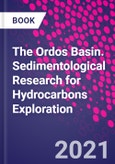The Ordos Basin: Sedimentological Research for Hydrocarbons Exploration provides an overview of sedimentological approaches used in the lacustrine Ordos Basin (but also applicable in other marine and lacustrine basins) to make hydrocarbon exploration more efficient. Oil exploration is becoming increasingly focused on tight sandstone reservoirs and shales. The development of these reservoirs, particularly regarding the sedimentary processes and the resulting sediments, are still poorly understood. Exploration and exploitation of such reservoirs requires new insights into the lateral and vertical facies changes, and as already indicated above, the knowledge surrounding facies and how they change in deep-water environments is still relatively unclear.
Please Note: This is an On Demand product, delivery may take up to 11 working days after payment has been received.
Table of Contents
1. Sedimentary and tectonic development of the Ordos Basin and its hydrocarbon potential
Section A Relationships between tectonics, sedimentology, diagenesis, and hydrocarbon reservoirs
2. The collision between the North China Block and the South China Block, and the resulting event beds in the Triassic Yanchang Formation (southern Ordos Basin, China)
3. Origin and evolution of dolomite reservoirs in the Ordovician Majiagou Formation, Central and Eastern Ordos Basin, NW China
4. Depositional model and diagenetic evolution of hydrocarbon reservoirs in deep dolomites of the Ordos Basin, China
5. Facies shifts in the Ordos Basin (China) along the southern and western margins of the North China Plate as a result of plate tectonics
6. Evolution during the Permian from a marine to a continental setting, south-eastern Ordos Basin, China
7. Hydrocarbon accumulations in the Permian Shanxi Formation (Ordos Basin, China) as controlled by sedimentary heterogeneities
8. Subsidence of the Mesozoic Ordos Basin and resulting migration of depocenters
Section B The role of diagenesis in gas fields
9. Chlorite coatings of quartz grains and the implications for Permian gas reservoirs in the Ordos Basin (China)
10. Gas geochemistry indicates Ordovician marine micrites as the main source rock of natural gas in a weathered limestone reservoir (Jingbian Gas Field, Ordos Basin, China)
11. The influence of diagenesis on low-porosity, low-permeability gas reservoirs in the Sulige Gas Field (Ordos Basin, China)
12. Diagenetically induced heterogeneity of tight gas reservoirs near Zizhou (Ordos Basin, eastern China)
Section C Understanding facies problems
13. Facies distribution in the Ordovician Pingliang Formation (southern Ordos Basin, China) and the role of turbidity currents
14. When turbidity currents cross contour currents: a struggle for life in the Ordovician along the southern margin of the Ordos Basin (China)
15. Predicting the spatial distribution of sandy mass-flow deposits in deep basins by analysis of mud-coated structures
Section D Focus on the Yanchang Formation
16. Lacustrine sequence stratigraphy: New insights from the study of the Yanchang Formation (Middle-Late Triassic), Ordos Basin, China
17. The origin of hyperpycnites in the Middle-Late Triassic Yanchang Fm. (Ordos Basin, China) and their significance for the formation of unconventional hydrocarbons
18. Influence of diagenesis on reservoir properties of the Chang 2 Oil Member of the Yanchang Formation in the Zhidan Oil Field (Ordos Basin, China)
19. Slurry deposits in cores from the Middle-Late Triassic Yanchang Formation (Ordos Basin, China)
20. Late Triassic tectono-volcanic activity and resulting soft-sediment deformation structures in the Yanchang Formation (Ordos Basin, China)
21. Middle-Late Triassic muddy gravity-flow deposits in the Ordos Basin (China)
22. Debrite/turbidite transitions in the Chang 6 Oil Member of the Yanchang Formation (Ordos Basin, China)
23. Reservoir quality of the Middle-Late Triassic Yanchang Formation (Ordos Basin) as controlled by sedimentology and diagenesis
24. The significance for unconventional petroleum exploration of a good classification system for gravity-flow deposits, with examples from the Yanchang Formation
25. Quality of tight sandstone reservoirs in gravity-flow deposits of the deep-lacustrine Yanchang Formation (Ordos Basin, China) as controlled by diagenesis








